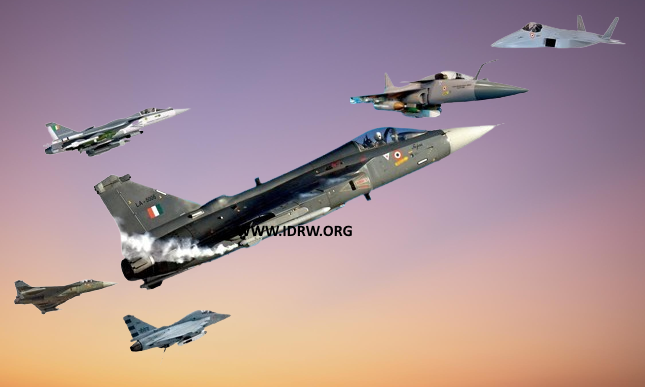SOURCE: AFI


The Light Combat Aircraft (LCA) Tejas program, one of India’s most ambitious Indigenous defence projects, has been a journey of innovation, persistence, and national pride. Here are some intriguing facts that highlight the narrative of the Tejas.
The LCA project was first conceived in 1983 with the goal to replace the aging MiG-21 fleet. However, it wasn’t until February 2001 that the first Tejas prototype took to the skies, marking a development period of nearly two decades. This long gestation underscores the challenges of indigenous aircraft development in India.
“Tejas” means “radiance” or “brilliance” in Sanskrit, reflecting the aspirations of the project to shine as a beacon of India’s technological and aerospace prowess. The name was chosen to symbolize the hope and expectation pinned on this aircraft to light up the Indian skies with its performance.
Tejas sports a tailless, compound delta wing design, a choice that not only gives it a distinctive look but also contributes to its maneuverability. This configuration was selected for its aerodynamic efficiency, low radar cross-section, and superior performance at high angles of attack.
One of the technological marvels of the Tejas is its quadruplex digital fly-by-wire (FBW) flight control system. This system, developed indigenously, offers quadruple redundancy for enhanced flight safety, stability, and control, making the Tejas one of the few aircraft in its class with such advanced avionics.
Initially designed as a lightweight fighter, the Tejas has evolved into a multi-role aircraft capable of performing air superiority, maritime reconnaissance, and strike missions. Its adaptability is showcased through various versions like the Tejas Mk1, Mk1A, and the upcoming Mk2, each with enhanced capabilities.
While primarily an indigenous project, the Tejas program benefited from international collaborations. For instance, the General Electric F404 engine powers early variants, with plans to transition to the more powerful F414 for future models. Similarly, the aircraft’s radar, the Elta EL/M-2032, was initially from Israel, though efforts are ongoing to replace it with an indigenous radar.
Over the years, the indigenous content in Tejas has significantly increased. From less than 40% in the initial prototypes, the current production models boast over 60% indigenous components, with ambitions to reach nearly 75% in future iterations. This growth is a testament to India’s push towards self-reliance in aerospace manufacturing.
The Indian Air Force officially inducted the Tejas into service in July 2016, with No. 45 Squadron (“Flying Daggers”) becoming the first to operate the aircraft. Since then, additional squadrons have been equipped with Tejas, showcasing its operational viability and acceptance within the military.
Tejas has attracted interest from several countries, including Argentina, Malaysia, and the Philippines, for potential acquisition. This international interest underscores the aircraft’s competitive capabilities and reliability, positioning India as an emerging player in the global arms market.
The Tejas program isn’t standing still; the development of Tejas Mk2 is underway, which will feature a more powerful engine, advanced avionics, and enhanced combat capabilities. Moreover, projects like the Naval LCA and the Twin Engine Deck Based Fighter (TEDBF) are expanding the Tejas family, aiming to meet diverse operational requirements.
The journey of Tejas has been marked by skepticism regarding its capabilities and delays in development. However, with each milestone, from receiving its final operational clearance to performing at international air shows, Tejas has gradually silenced its critics, proving its worth in both domestic and international arenas.
The LCA Tejas program is more than just an aircraft development project; it’s a symbol of India’s determination to achieve technological independence in aerospace. As Tejas continues to evolve, it carries with it the aspirations of not just becoming a formidable asset for the Indian Armed Forces but also a flagbearer of Indian innovation on the global stage.